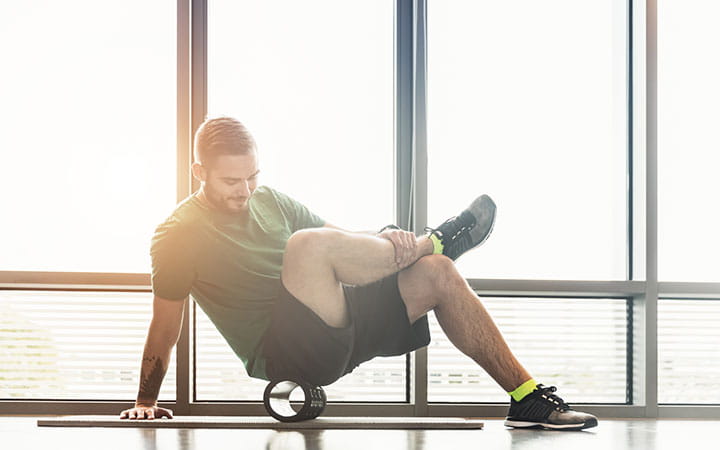How to Get Your Body Ready for Exercise in Cold Weather
October 29, 2016

Darkness may be coming earlier and temperatures may be beginning to drop, but that’s no reason to stop working out.
While some people bring their exercise program indoors when winter weather sets in, others may choose to brave the frigid air and stay outside. Taking measures now to prepare – while the air is still mild – can make the transition easier when the temperatures fall, says orthopaedic clinical specialist and senior physical therapist Elayna Theiss, PT.
“Cold weather can make it more challenging to maintain your core temperature,” she says. “You can work on that now by building up your muscle mass. People with more muscle mass can maintain their core temperature better than somebody with less. And the better your cardiovascular fitness, the better your ability to exercise longer and at a high metabolic rate. So strength training and conditioning now can help to prepare you for cold weather workouts.”
Warm-up is Essential
If you exercise outside in the winter, a good pre-workout warm-up is essential, she says. That’s because your muscles are less flexible in cold weather than in the heat of the summer.
“Regardless of the weather or the time of year, you should complete a general dynamic warm-up to improve your blood flow and heart rate before participating in exercise or an athletic activity,” Ms. Theiss says. “It may help to reduce your risk of injury.”
With the frozen ground covered with ice and snow, winter workouts present elevated risks of slips and falls. That, Ms. Theiss says, increases your risk of sprains and broken bones.
“It’s a good idea to run your route and get acclimated to it before it gets slippery or uneven,” she says.
Cold weather also brings the risks of frostbite and hypothermia. Ms. Theiss recommends dressing in layers – the bottom layer should be able to wick sweat away from your skin.
“In general, if your body is wet, it will transfer heat faster, so staying dry will help you to maintain your body temperature a little longer,” she says.
How a Physical Therapist Can Help
A physical therapist can help you to design a personal exercise program for optimum safety and results, regardless of the climate.
“Everybody is different,” she says. “A physical therapist can do things like a video running analysis that can pick up on risk factors that may predispose somebody to injury. It might give them something to work on now and keep them healthy through the winter.”
Although cold weather exercise has some risks, especially when compared to working out inside, it also has benefits, Ms. Theiss says.
“Getting outside in the sunlight exposes you to vitamin D, which may improve your overall mood compared to being stuck inside all winter,” she says.
Elayna Theiss, PT is an orthopedic clinical specialist and senior physical therapist for UH Rehabilitation Services at UH Mayfield Village Health Center. You can request an appointment with a University Hospitals physical therapist or sports services specialist online.


